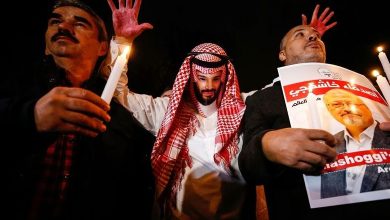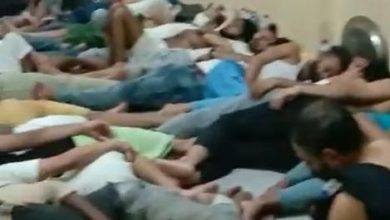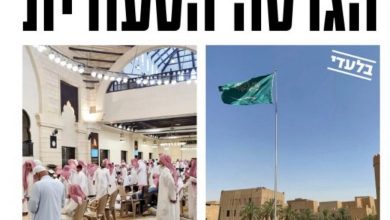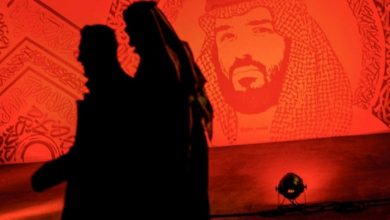A million Saudi people forcibly displaced in Jeddah to give way for bin Salman projects

Human rights reports revealed that about one million people had become victims of forced displacement after the destruction of neighbourhoods in Jeddah without receiving adequate compensation, whether for Saudi citizens or foreigners whose properties were damaged or destroyed or became uninhabitable.
Democracy for Arab World Now (DAWN) highlighted that on December 17, 2021, Crown Prince Mohammed bin Salman revealed a major development plan for the Downtown Jeddah project.
The Downtown Jeddah project, formerly New Jeddah Downtown, was part of Mohammed bin Salman’s ambitious 2030 vision.
The Downtown Jeddah project envisions demolishing neighbourhoods in southern Jeddah to transform them from a string of middle-class and working-class neighbourhoods into high-end luxury homes, high-end restaurants and public spaces to attract wealthy Saudis and expats.
While the government is expected to spend more than $20 billion on this high-end development, very little of that amount has been allocated to compensate the 1.5 million Saudis who have lost or will lose their homes, livelihoods, and neighbourhoods to the demolitions.
Demolitions began slowly in October 2021, but by December, the Saudi authorities had started to demolish large parts of several neighbourhoods, forcibly displacing residents without warning and without prior consultation or adequate compensation afterwards.
Between October 2021 and May 2022, Saudi authorities demolished 16 to 20 neighbourhoods over 4,000 square kilometres.
The speed and breadth of demolitions inside Jeddah were unprecedented in modern Saudi history, and the impact of the demolitions on Saudi citizens will be significant.
A recently published map of the project shows that the demolitions, which are expected to be completed this month, will affect 1.5 million Saudis in 63 neighbourhoods spread over 3 million square kilometres.
The research conducted by DAWN concluded that the forced displacements of the Saudi government violate international law because these measures are incompatible with internationally recognized legal guarantees to guarantee and protect the population’s rights.
The Saudi government has failed to exhaust appropriate alternatives to displacement and to follow legal procedures, including providing advance notice and an opportunity to appeal or providing prompt, adequate, and effective compensation.
Furthermore, forced displacements also violate Saudi law, particularly the Law on Expropriation of Real Estate for the Public Benefit, which requires the government to exhaust all alternatives to expropriation, including public appropriation, and to provide fair compensation and appropriate and reasonable notice.
The organization stressed that the Saudi government must stop all demolitions in and around Jeddah until it can ensure that development projects comply with international legal standards and Saudi law, including providing sufficient time and opportunity to appeal the decision and prompt and adequate compensation for the property.
Oujda is the second largest city in the Kingdom, with a population of about 4.5 million.
While Jeddah is a major centre of commerce and culture, including the UNESCO-protected historic district, Jeddah suffers from socio-economic inequality. It is an overcrowded urban centre with a housing shortage for lower and middle-class Saudis.
In October 2021, the Saudi authorities began demolishing thousands of homes in several neighbourhoods south of Jeddah as part of a plan to redevelop the area under the Downtown Jeddah project.
Although public criticism of the Saudi government is rare and not tolerated, Saudi citizens demonstrated on various dates in February 2022 against demolitions and forced displacement. Protests occurred in densely populated neighbourhoods, including many working-class neighbourhoods where Saudi officials consider slums.
The need to improve and develop parts of Jeddah, especially in its developmentally faltering southern region, is an old issue for the Saudi government.
For years, city planners and government officials formulated various plans and projects, and while most remained speculative, some were implemented by the government. However, government bureaucracy and corruption contributed to the low levels of implementation.
Although the demolitions began in October, the government did not fully disclose the plan behind these demolitions under the Downtown Jeddah project until mid-December 2021.
The impact of the demolitions on Saudi citizens and foreigners, especially economic migrants who live and work in these neighbourhoods, has already been and will continue to be significant.
A recently published project map shows that these demolitions will affect up to 1.5 million residents—about a third of the city’s population—in 63 neighbourhoods. Saudi authorities plan to complete the ruins by October 2022.
The negative public perception of the demolitions in Jeddah derives from previous government actions, in which Saudi officials used the pretext of public safety and development to target the country’s Shiite minority, and deployed military forces in June 2017 to destroy the nearly 400-year-old Al-Musawara neighborhood in the city of Awamiya in the Eastern Province.
In implementing these measures, government forces killed at least twenty people and displaced thousands.
The demolitions may lead to anti-government sentiment in the targeted areas, many of which are inhabited by a mix of Saudis and foreigners from other Arab countries and Asia.





